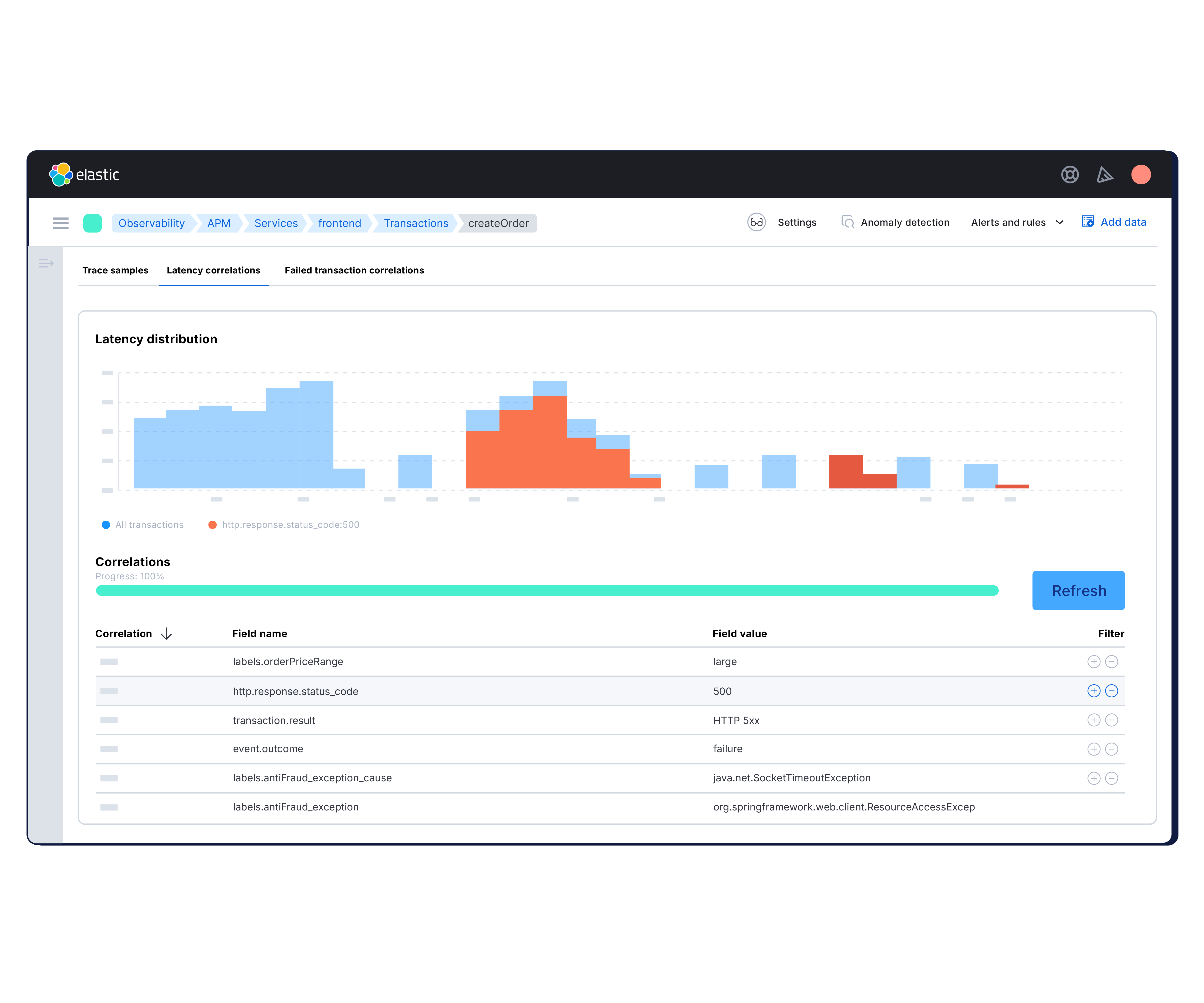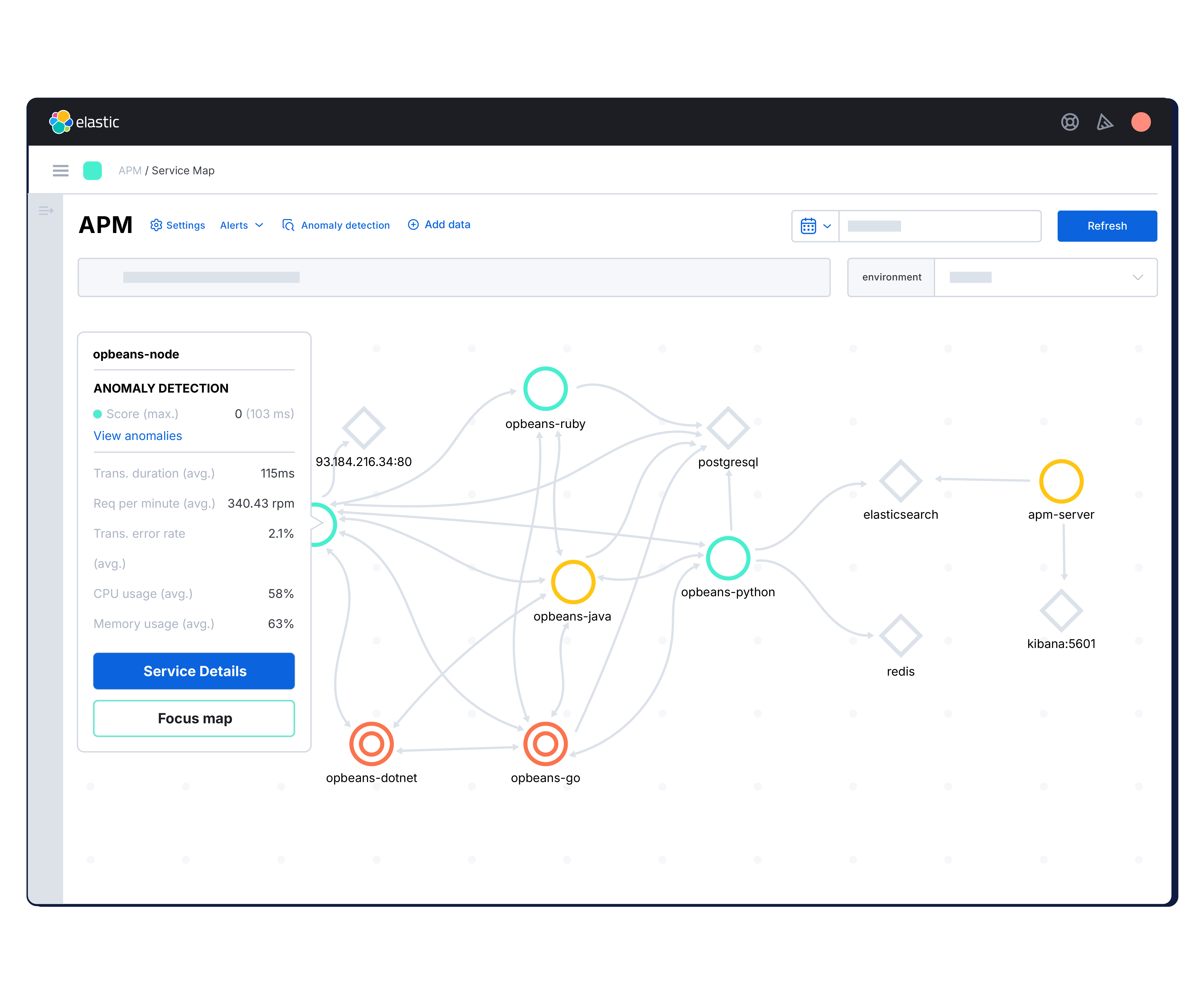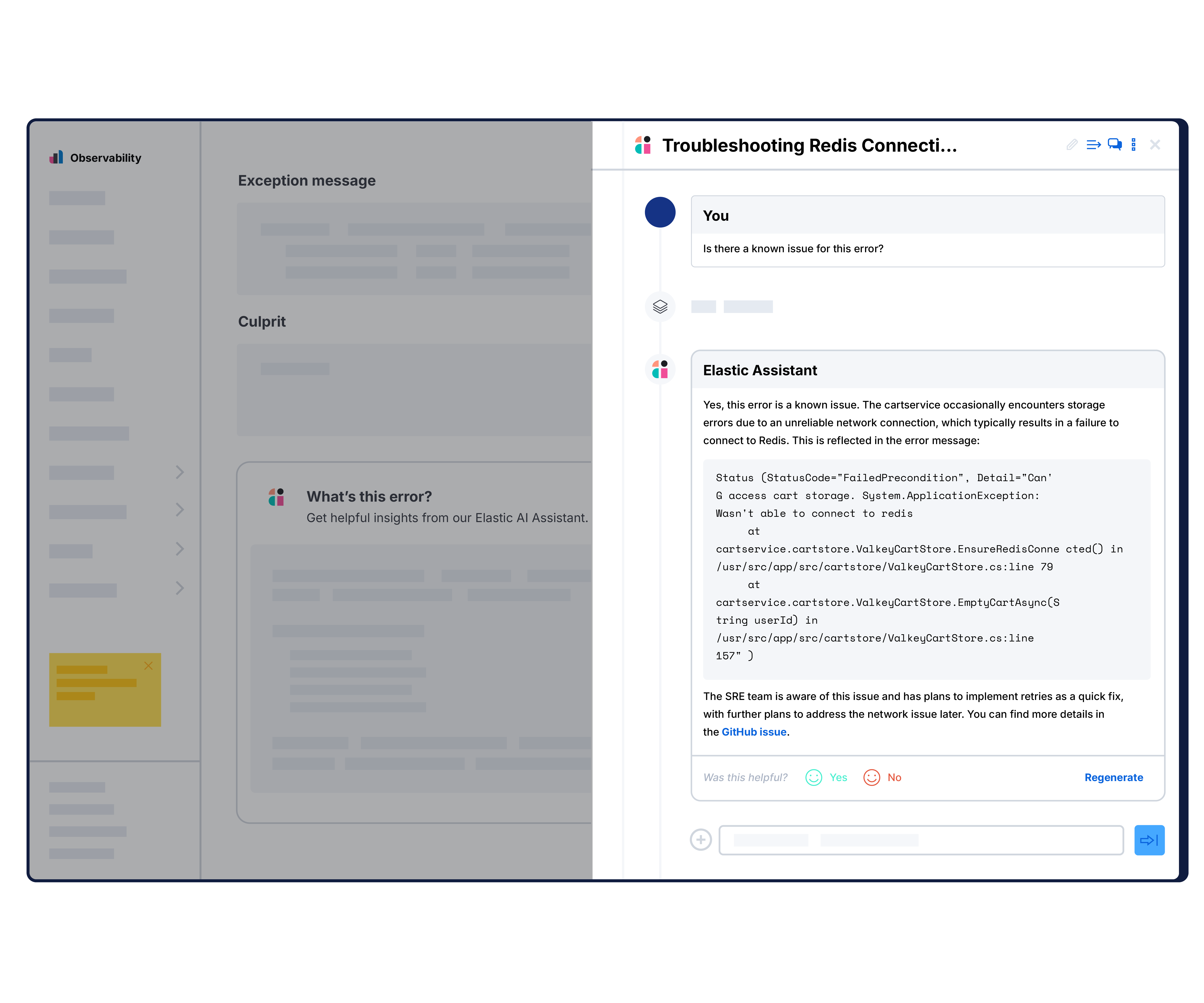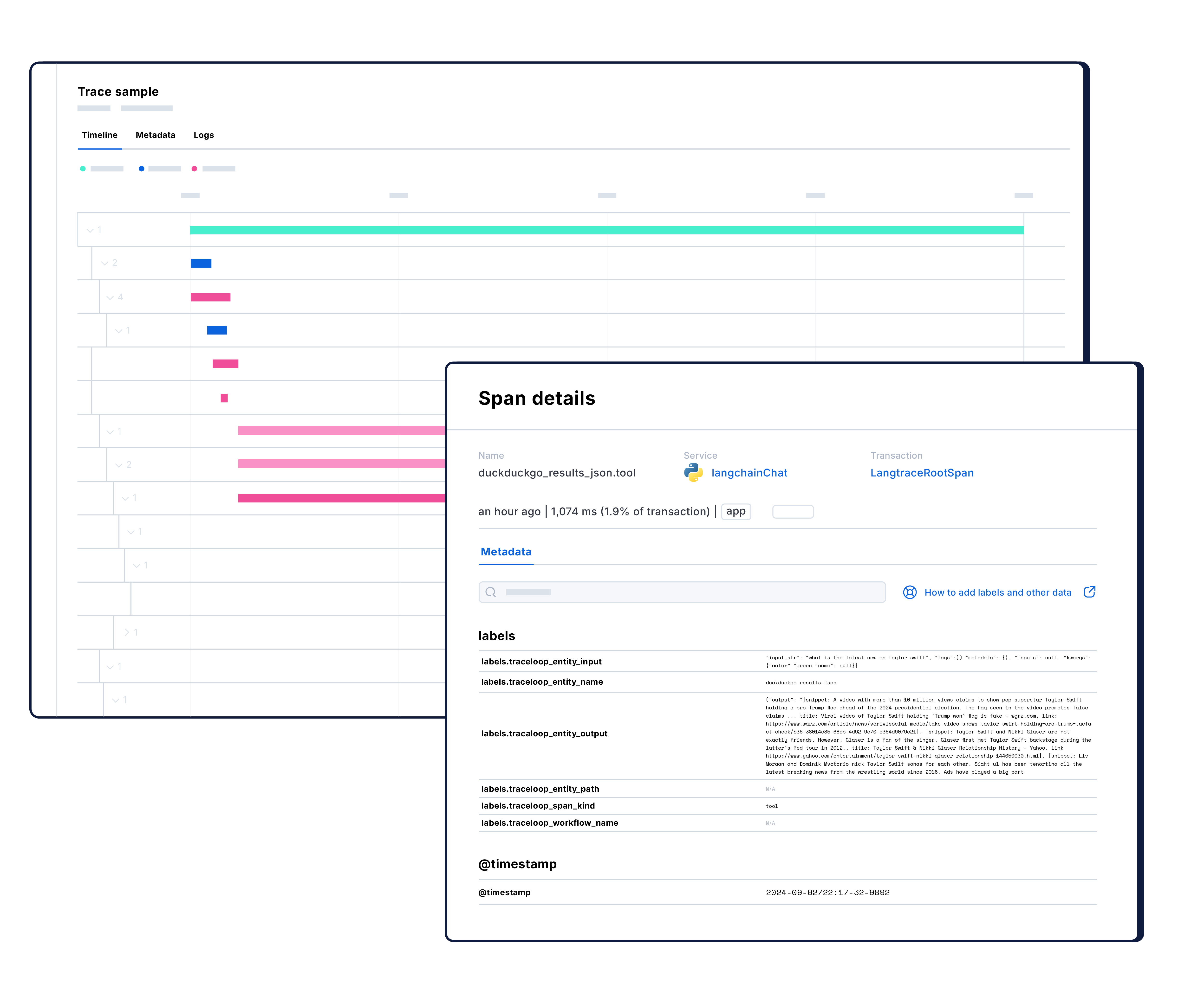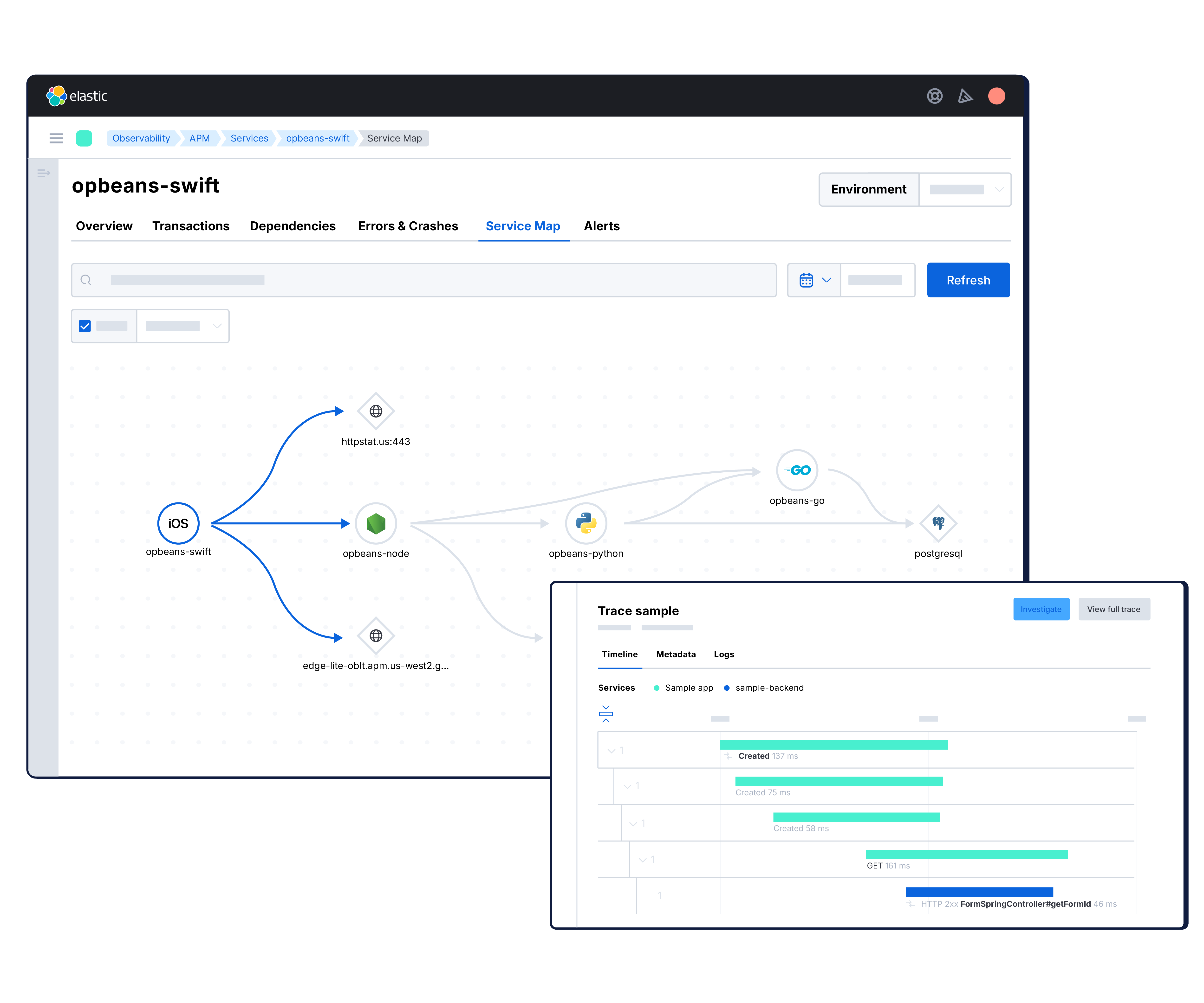OpenTelemetry-native application performance monitoring
Auto-instrument your applications, visualize and correlate dependencies, and quickly pinpoint root causes — right down to the code.
Guided Demo
100% visibility, zero downtime
Spotlight anomalies and speed up troubleshooting across distributed microservices, serverless functions, AI models, third-party APIs, and more.
VISUALIZE & ANALYZE
Pinpoint code issues and debug faster
Every trace matters. Elastic gives you full visibility into every service, every span, and every request — captured and correlated.
- Track requests across your stack with lightweight, OpenTelemetry-based distributed tracing. Head- and tail-based sampling cuts overhead without cutting context. Get the critical traces you need without the performance penalty.
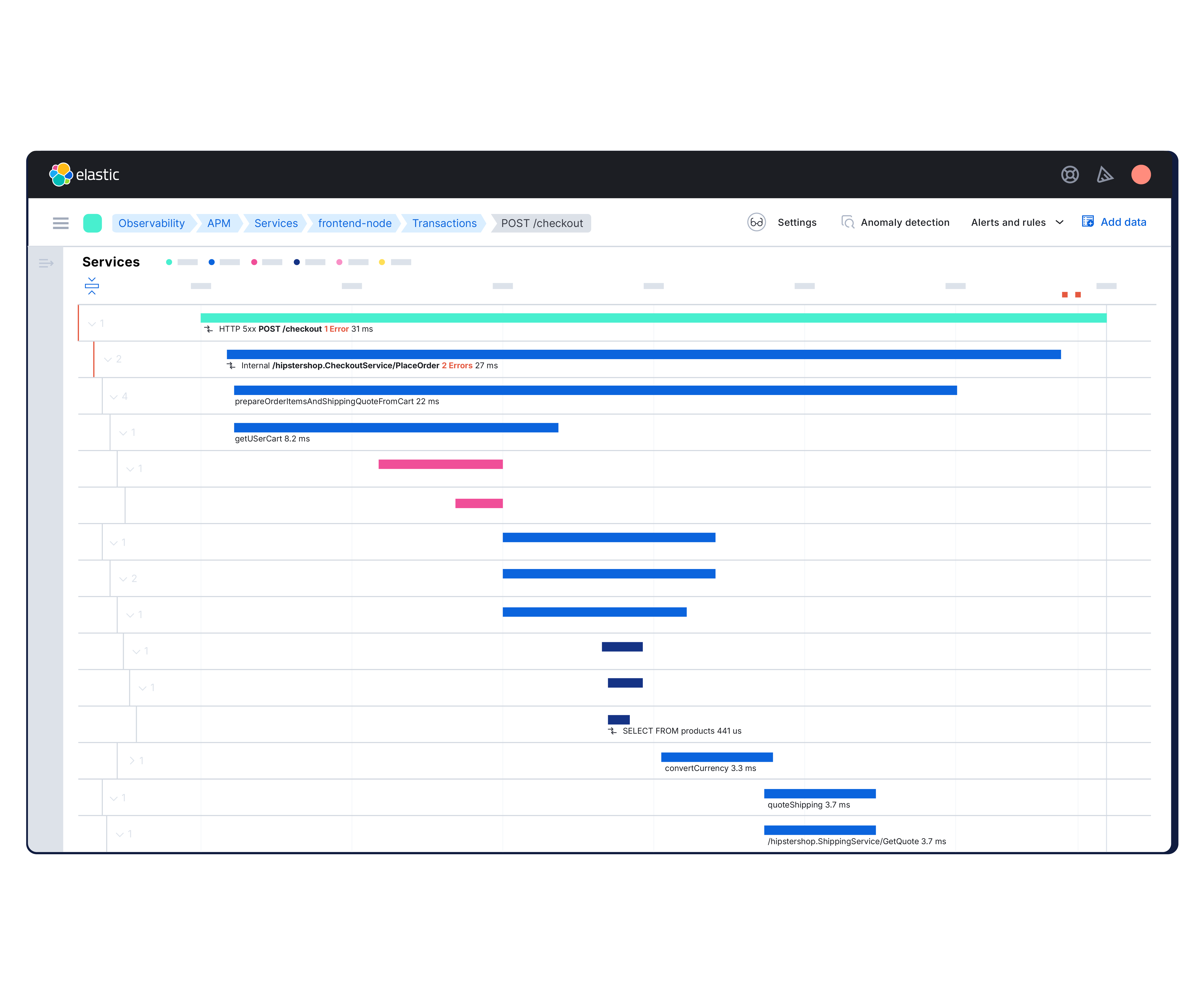

Broad language support








See why companies like yours choose Elastic APM
Get full end-to-end visibility — from code to infrastructure.
Customer spotlight
 Equinox uses Elastic APM to monitor 200+ microservices, cutting time to deploy fixes by up to 50% and accelerating issue resolution across its stack.
Equinox uses Elastic APM to monitor 200+ microservices, cutting time to deploy fixes by up to 50% and accelerating issue resolution across its stack.Customer spotlight
 Wells Fargo relies on Elastic APM to monitor money-moving apps at scale — capturing 100% of distributed traces and correlating them with logs and other signals.
Wells Fargo relies on Elastic APM to monitor money-moving apps at scale — capturing 100% of distributed traces and correlating them with logs and other signals.Customer spotlight
Lufthansa's Miles & More loyalty program uses Elastic APM to monitor key services, employing unified views for faster detection and root cause analysis.




